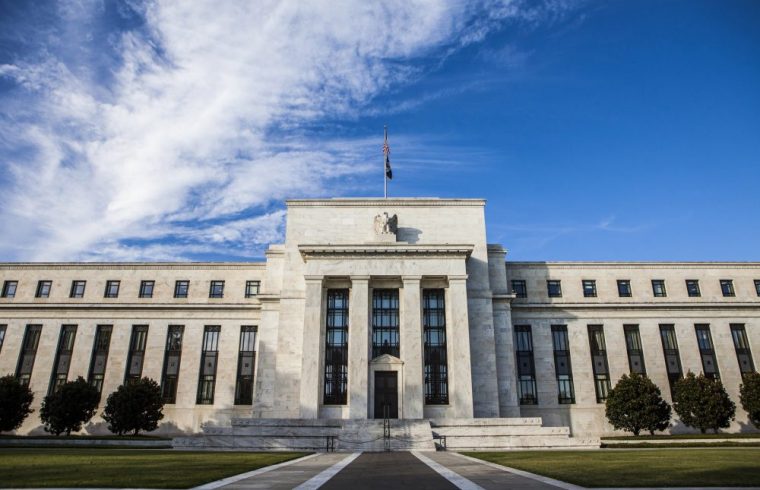 On May 24, 2018, EGRRCPA amended provisions in the Dodd-Frank Wall Street Reform and Consumer Protection Act (Dodd-Frank Act) as well as other statutes administered by the Board of Governors of the Federal Reserve System (Board), the Federal Deposit Insurance Corporation (FDIC), and the Office of the Comptroller of the Currency (OCC) (collectively, the agencies). The amendments made by EGRRCPA provide for additional tailoring of various provisions of the banking laws while maintaining the authority of the agencies to ensure the safety and soundness of the institutions they supervise and to apply the enhanced prudential standards in the Dodd-Frank Act that address financial stability. Using authorities established by the Dodd-Frank Act and other laws, the agencies jointly strengthened capital, liquidity, risk management, and other standards for banking organizations in response to the 2008 financial crisis.
On May 24, 2018, EGRRCPA amended provisions in the Dodd-Frank Wall Street Reform and Consumer Protection Act (Dodd-Frank Act) as well as other statutes administered by the Board of Governors of the Federal Reserve System (Board), the Federal Deposit Insurance Corporation (FDIC), and the Office of the Comptroller of the Currency (OCC) (collectively, the agencies). The amendments made by EGRRCPA provide for additional tailoring of various provisions of the banking laws while maintaining the authority of the agencies to ensure the safety and soundness of the institutions they supervise and to apply the enhanced prudential standards in the Dodd-Frank Act that address financial stability. Using authorities established by the Dodd-Frank Act and other laws, the agencies jointly strengthened capital, liquidity, risk management, and other standards for banking organizations in response to the 2008 financial crisis.
This statement provides information on rules and associated reporting requirements that the agencies jointly administer and that EGRRCPA immediately affected. The agencies will take the positions described below in the interim until the agencies amend their regulations to incorporate EGRRCPA’s changes. Certain amendments took effect on the day of EGRRCPA’s enactment, whereas other provisions will take effect at a later date.
Company-Run Stress Testing
Eighteen months after EGRRCPA’s enactment, financial companies with total consolidated assets of less than $250 billion that are not bank holding companies (BHCs) will no longer be subject to the company-run stress testing requirements in section 165(i)(2) of the Dodd-Frank Act. In contrast, on EGRRCPA’s date of enactment, BHCs2 under $100 billion in total consolidated assets were no longer subject to section 165(i)(2). The agencies’ regulations implementing company-run stress testing provide that the agencies may extend any deadline relating to company-run stress testing. In order to avoid unnecessary burden for depository institutions and to maintain consistency between BHCs and depository institutions, 4 the agencies are extending the deadlines for all regulatory requirements related to company-run stress testing for depository institutions with average total consolidated assets of less than $100 billion until November 25, 2019 (at which time both statutory exemptions will be in effect).
Resolution Plans
Consistent with EGRRCPA, the Board and FDIC will not enforce the final rules establishing resolution planning requirements in a manner inconsistent with the amendments made by EGRRCPA to section 165 of the Dodd-Frank Act.
Volcker Rule
EGRRCPA amends section 13 of the BHC Act by narrowing the definition of banking entity and revising the statutory provisions related to the naming of covered funds, effective on EGRRCPA’s date of enactment. The agencies will not enforce the final rule implementing section 13 of the BHC Act in a manner inconsistent with the amendments made by EGRRCPA to section 13 of the BHC Act. 7 The agencies also intend to address the statutory amendments through a separate rulemaking process.
High Volatility Commercial Real Estate (HVCRE) Exposures
EGRRCPA provides that, effective upon enactment, the agencies may only require a depository institution to assign a heightened risk weight to an HVCRE exposure if such exposure is an “HVCRE ADC Loan,” as defined in section 214 of EGRRCPA. Accordingly, a depository institution is permitted to risk-weight at 150 percent only those commercial real estate exposures it believes meet the statutory definition of HVCRE ADC Loan. When reporting HVCRE exposures on Schedule RC-R, Part II of the Consolidated Reports of Condition and Income (Call Report), depository institutions may use available information to reasonably estimate and report only HVCRE ADC Loans. Depository institutions may refine these estimates in good faith as they obtain additional information but will not be required to amend previously filed regulatory reports as these estimates are adjusted. Alternatively, a depository institution may also continue to report and risk-weight HVCRE exposures in a manner consistent with the current instructions to the Call Report, until the agencies take further action. Furthermore, to avoid the regulatory burden associated with different definitions for HVCRE exposures within a single organization, the Board will not take action to require a BHC, savings and loan holding company, or intermediate holding company of a foreign bank to estimate and report HVCRE on Schedule HC-R, Part II of the FR Y-9C consistent with the existing regulatory requirements and reporting form instructions if the holding company reports HVCRE in a manner consistent with its subsidiary depository institution(s). A holding company may also continue to report and risk-weight HVCRE exposures in a manner consistent with the current instructions to Schedule HC-R, Part II of the FR Y-9C.
Examination Cycle
EGRRCPA increases the total asset threshold for well-capitalized insured depository institutions to be eligible for an 18-month examination cycle from $1 billion to $3 billion, making an 18-month examination cycle available to a larger number of “1-rated” institutions, and authorizes the agencies to make corresponding changes for “2-rated” institutions. The agencies intend to engage in rulemaking to implement these provisions.
Municipal Obligations as High-Quality Liquid Assets (HQLA)
EGRRCPA provides that the agencies shall treat certain municipal obligations as HQLA for purposes of their final rules establishing a liquidity coverage ratio and in other regulations incorporating the term HQLA (collectively, liquidity regulations). EGRRCPA also provides that the agencies shall amend their liquidity regulations to implement these changes no later than 90 days after the enactment of EGRRCPA. The agencies intend to engage in rulemaking to address these provisions. In anticipation of implementing these changes through rulemaking, the agencies will not take action to require an institution subject to the liquidity regulations to exclude from the definition of HQLA municipal obligations that it believes meet the statutory criteria for inclusion in HQLA.
Appraisals for Qualifying Rural Transactions
EGRRCPA provides an exemption to the appraisal requirements for certain transactions with values of less than $400,000 involving real property or an interest in real property that is located in a rural area, as specified in section 103 of EGRRCPA. This exemption was effective upon EGRRCPA’s enactment. The agencies are reviewing the statutory provisions to determine whether further action is necessary.
Other Provisions
A number of other changes made by EGRRCPA require agency implementation either through a rulemaking or other action; for example, the reduced reporting requirement for certain small depository institutions. The agencies intend to engage in rulemaking to address these provisions at a later date.
Ongoing Supervisory Expectations
The agencies are taking the actions outlined in this statement consistent with the purpose and direction of EGRRCPA. In this context, and consistent with the banking laws as amended by EGRRCPA, the agencies will continue to supervise and regulate financial institutions within their jurisdictions to ensure the safety and soundness of individual institutions and the stability of the broader banking system. Thus, for example, while the agencies will not take action to require company-run stress testing by depository institutions with assets less than $100 billion, the capital planning and risk management practices of these institutions would continue to be reviewed through the regular supervisory process.












